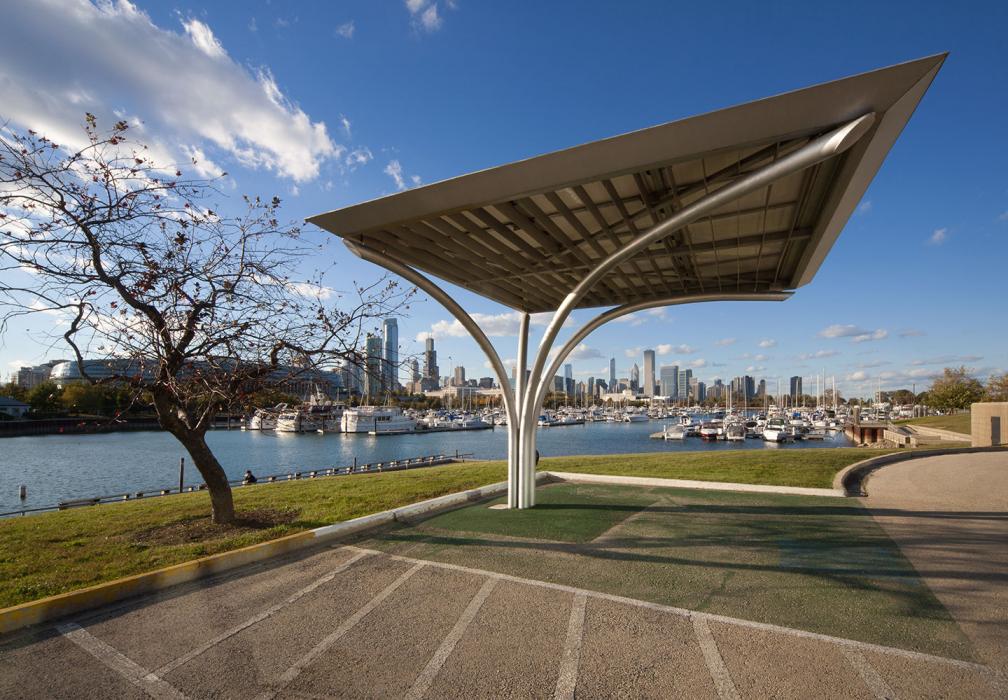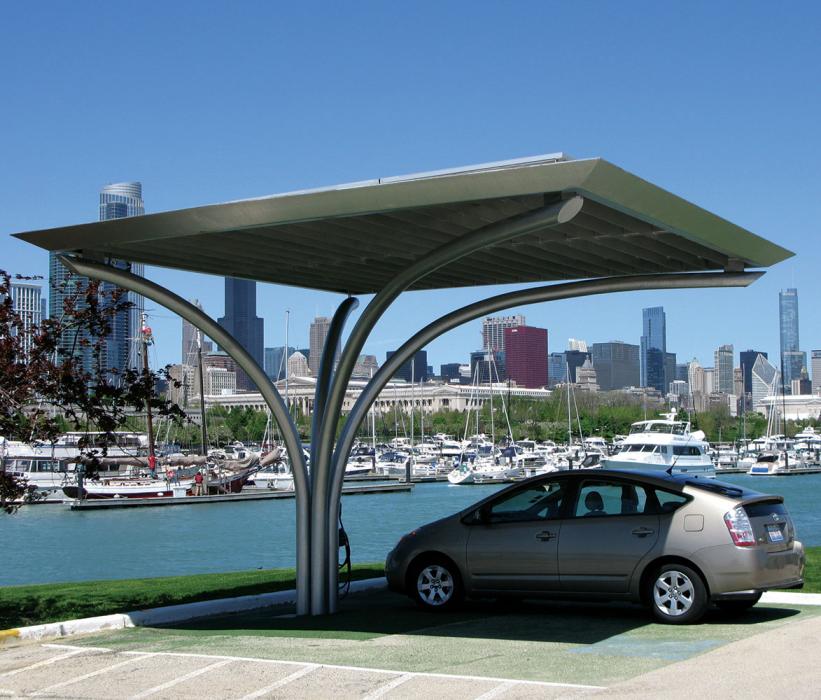
Solar Canopy / EV Dock
The solar canopy, along Lake Michigan on Chicago’s Northerly Island, is a public docking station for refueling of electric powered cars, bicycles and scooters.
Project Details
AISC IDEAS², Innovative Design in Engineering and Architecture with Structural Steel, 2013
International Architecture Award, 2012
An Elegant Refueling Station
The solar canopy, along Lake Michigan on Chicago’s Northerly Island, is a public docking station for refueling of electric powered cars, bicycles and scooters.
We provided structural engineering and steel detailing to Adrian Smith + Gordon Gill Architecture for the award-winning 11-foot-tall solar canopy / EV dock consisting of three tons of architecturally exposed structural steel. The prototype, completed in 2010, is composed of a tree-like steel superstructure that can support up to 900 pounds of solar equipment, a 300-square-foot canopy featuring photovoltaic panels, and a subterranean concrete foundation anchoring the structure to the ground.
Highlights
-
Utilizing 3D CAD and 3D analysis to design the compound curves in the smallest diameter pipes possible, the structure attained a graceful appearance that limits encroachments on parking spaces.
-
We minimized bolted connections in favor of welds, contributing to the project’s elegant design.
-
To further reduce cost and improve quality control, we decreased fieldwork by performing as much of the fabrication in the steel shop as possible.
-
From concept to working prototype, the solar canopy design was completed in 25 days.
-
The design allows also for a single, stand-alone unit or for multiple structures to be linked side-by-side.
-
It can generate enough electricity to power up to 30,000 carbon-free miles per year for two vehicles.











